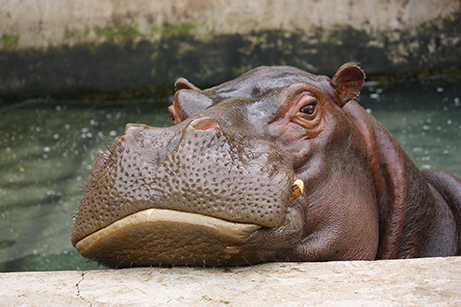How you can help Tbilisi Zoo, six months on from disastrous flood

The destructive June 13 flood in Georgia's capital Tbilisi affected a vast area in the central part of the city, including the city zoo, which found itself at the heart of the disaster.
Tbilisi Zoo was swamped by the surging Vere River in the June 13 flash flood and many of the Zoo’s animals were killed in the disaster.
The temporarily repaired Zoo reopened in September and officials said the best way to support its recovery was to visit the animal park and buy an entry ticket. But if you are not in Tbilisi, you can still support the Zoo via a direct donation to its restoration fund; the details of which were shared by Zoo staff on social media and can be found below:
FOR USD TRANSFER:
BENEFICIARY’S BANK: JSC TBC BANK, TBILISI, GEORGIA
SWIFT: TBCBGE22
BEN’S IBAN: GE11TB7898336180100005
NAME OF BENEFICIARY: TBILISIS ZOOPARKIS DAKHMAREBIS SAKVELMOKMEDO FONDI
FOR EURO TRANSFER:
BENEFICIARY’S BANK: JSC TBC BANK, TBILISI, GEORGIA
SWIFT: TBCBGE22
BEN’S IBAN: GE81TB7898336180100006
NAME OF BENEFICIARY: TBILISIS ZOOPARKIS DAKHMAREBIS SAKVELMOKMEDO FONDI
Zoo staff released this information to clarify official methods to donate to the stricken Zoo following the creation of several fake crowdfunding campaigns in the days following the flood.

Lucky survivoirs of Tbilisi flood:three penguins are back home in their pool. Photo by Khatia Basilashvili/Tbilisi Zoo.
Many of the online campaigns were unofficial and thousands of dollars donated by the public were never passed on to the Zoo or other victims of the flood.
The June 13 flood killed three Zoo staff and left the animal park in a state of complete chaos. The Zoo lost about 300 animals – about half of the animals that called the park home.
The lower part of the Zoo was completely destroyed and most animals that lived in that area died. Those that survived were 16 carnivores including five white lions, two leopards, three bears and two wolves, as well as 469 fish, 144 birds, 129 ungulates, 98 reptiles and seven primates.
 Tweet
Tweet  Share
Share